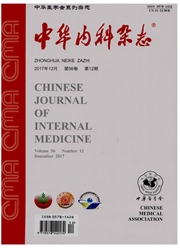

 中文摘要:
中文摘要:
目的初步探索在各类血液系统恶性疾病异基因造血干细胞移植(allo-HSCT)后,动态检测WT1基因表达水平对监测微小残留病(MRD)及预测临床复发的意义。方法采用实时定量(RQ)-RT-PCR技术动态检测31例allo-HSCT后患者的WT1基因表达(共计102份骨髓标本),测定其WT1 mRNA及内参基因ABL mRNA拷贝数。结果复发组和未复发组WT1基因中位表达水平分别为0.80%、0.17%,两者间差异有统计学意义(P〈0.01)。动态检测复发组WT1基因表达,显示WT1基因表达在临床复发前或伴随临床复发时可有明显的升高(均〉1.0%),复发时WT1基因表达水平较复发前一次明显升高(P〈0.05)。结论应用RQ-RT-PCR技术动态检测WT1基因表达,可能是移植后监测MRD及预测复发的一种有希望的手段。
 英文摘要:
英文摘要:
Objective To evaluate preliminarily the significance of dynamic detection of Wilms' tumor gene (WTI) expression level on monitoring minimal residual disease (MRD) and predicting clinical relapse in patients of malignancy following allogeneic hematopoietic stem cell transplantation (allo-HSCT). Methods WT1 expression level was measured with real-time quantitative reverse transcription polymerase chain reaction (RQ-RT-PCR) method on 102 bone marrow specimens from 31 patients following allo-HSCT. WT1 expression level was determined as the ratio of WT1 mRNA to ABL mRNA times 100%. Results The levels of WT1 expression showed significant difference between the relapsed group and the non-relapsed group (P〈0. 01 ), with 0. 80% and 0. 17% as their median expression level respectively. After dynamic measuring WT1 expression level on patients in the relapsed group, the level was found to increase significantly as compared with those during or before the clinical hematological relapse, both being 〉 1.0%. The level at the time of relapse was significantly higher than the latest previous one (P 〈 0. 05 ). Conclusion Dynamic detection of WT1 expression level with RQ-RT-PCR may be of help in monitoring MRD and warning clinical relapse on the patients following allo-HSCT.
 同期刊论文项目
同期刊论文项目
 同项目期刊论文
同项目期刊论文
 期刊信息
期刊信息
